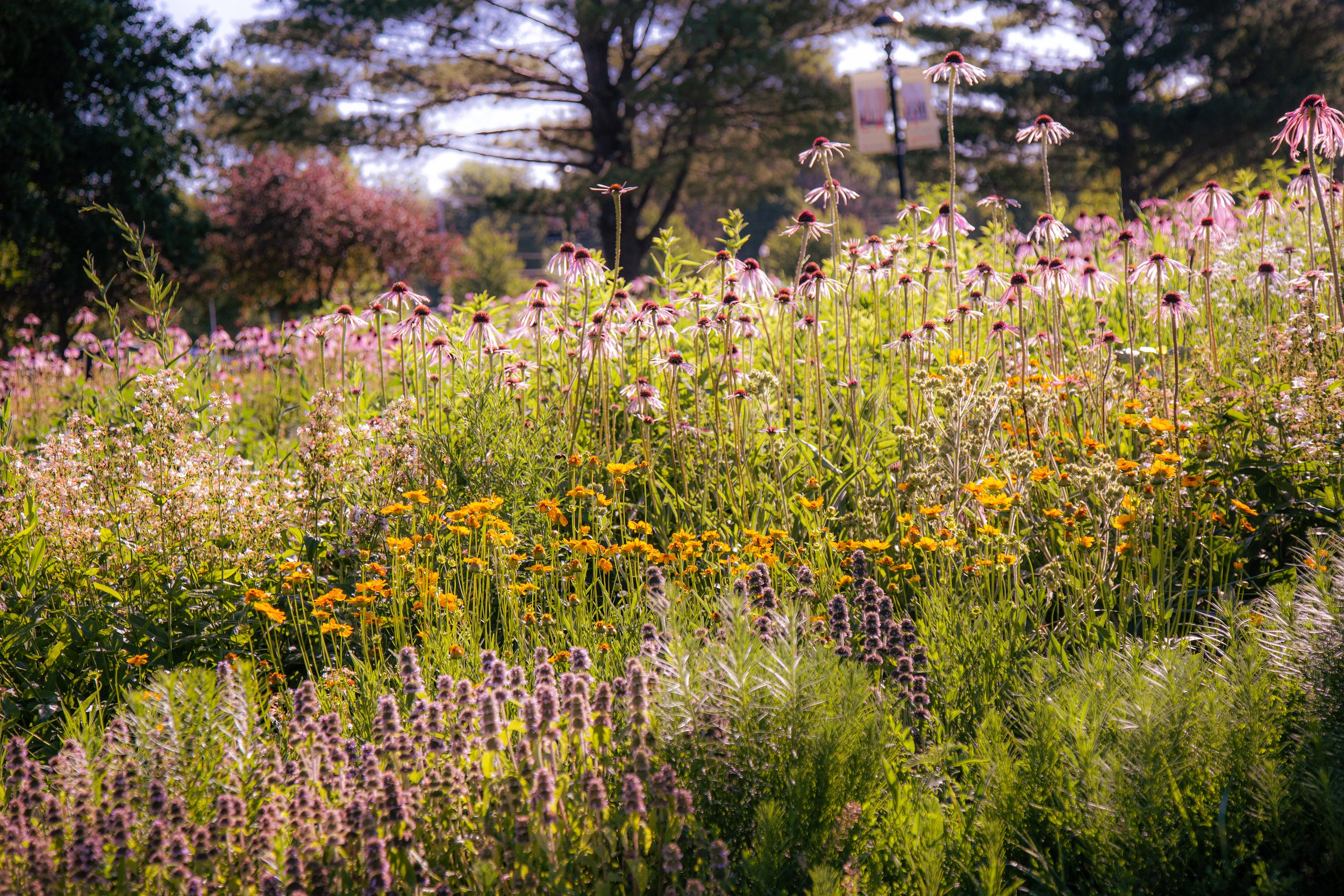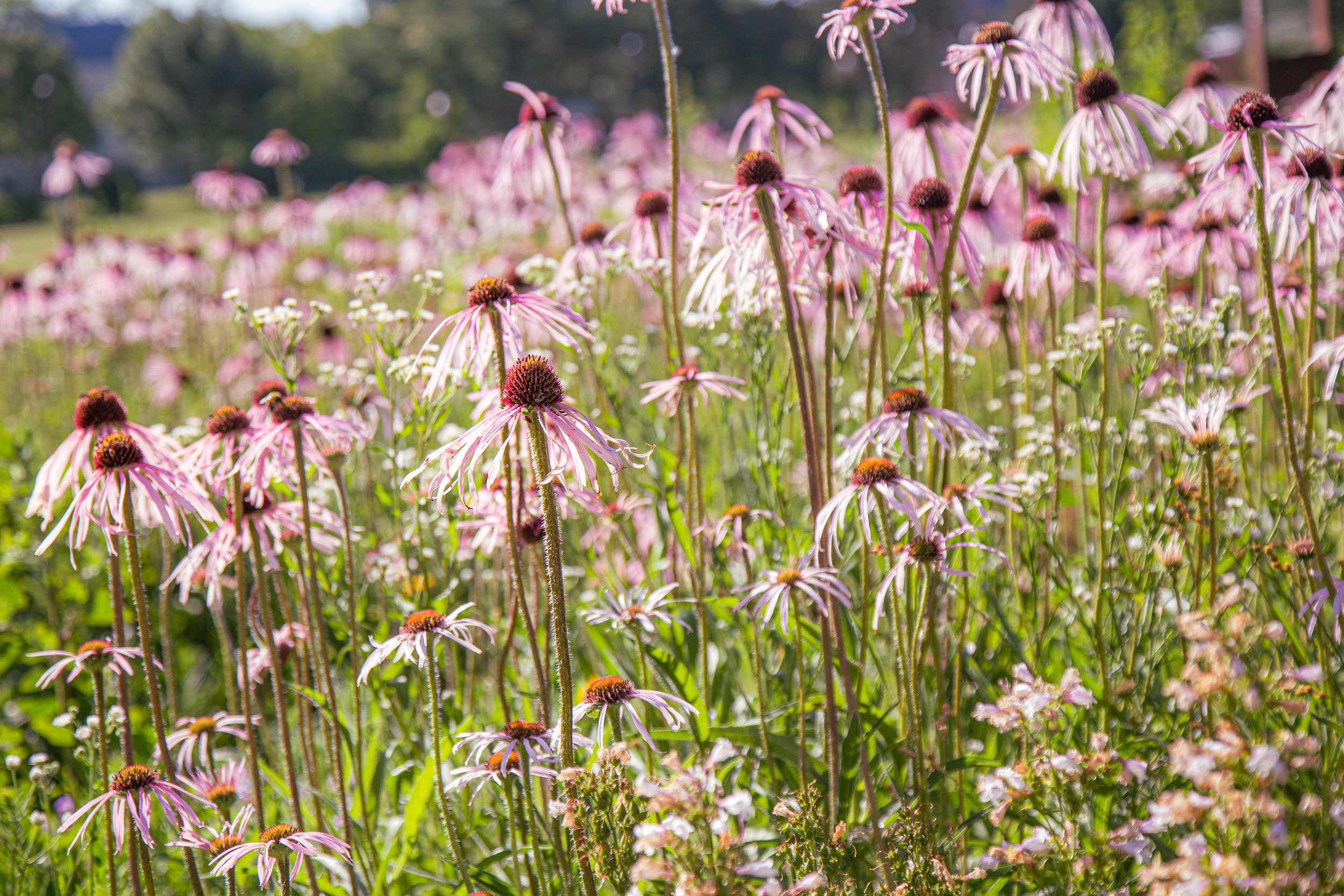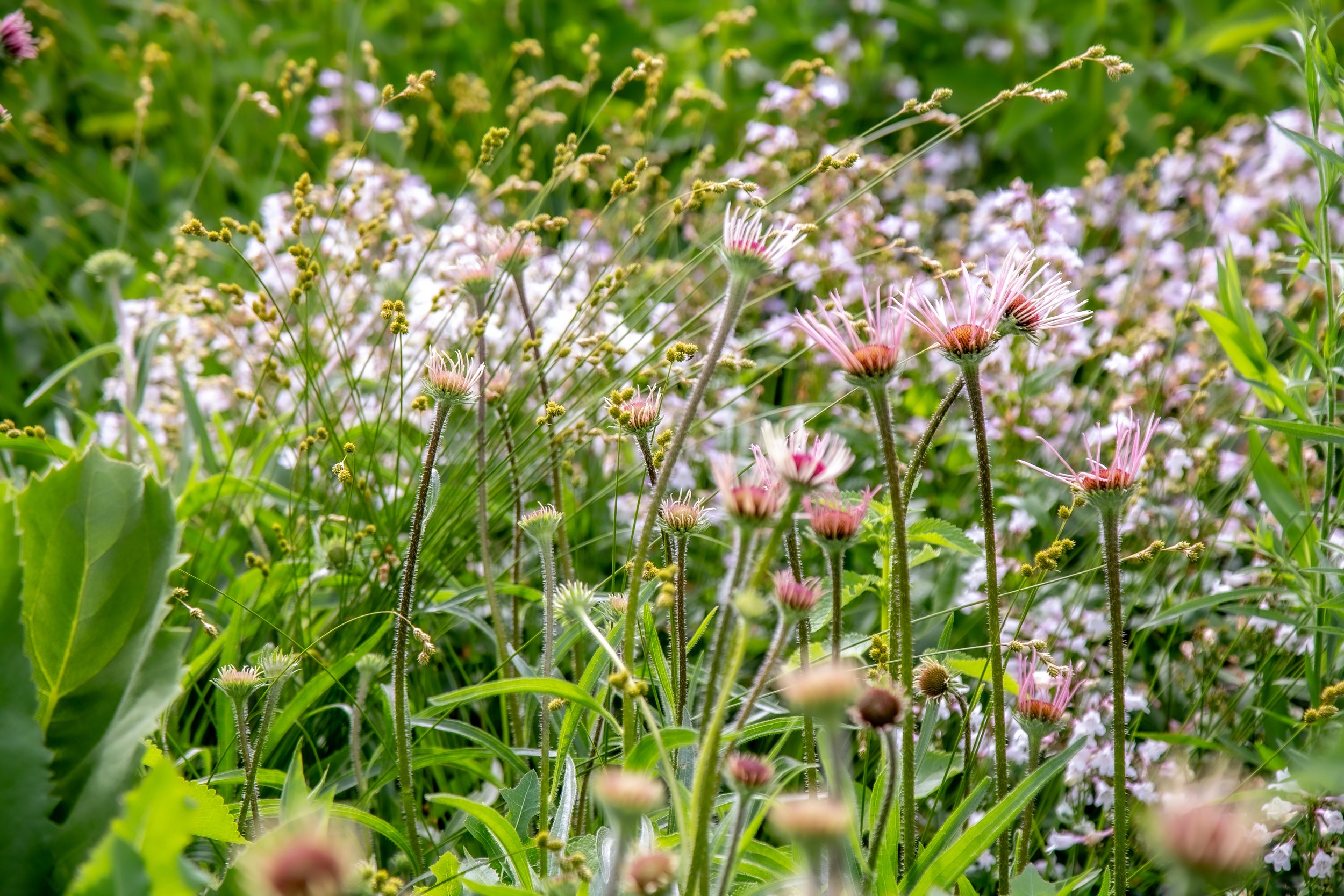
Campus Prairies
In early 2021, I became acquainted with artist Lee Emma Running who was at the time on faculty at Grinnell College and the director for the Center of Prairie Studies. Grinnell College students had voted to appropriate unused student activity fees towards the establishment of a prairie in the middle of MacEachron (Mac) Field. Through Lee’s diligence and facilitation, a project began to emerge around themes of reducing turfgrass on campus, doing so with herbicide-free methods and transitioning open space into an artefact that honored local natural history.
During a campus visit with students and staff in mid-March 2021, I evaluated three triangular-shaped areas for proposed planting installations over several years. Students were interested in the idea of disrupting the campus experience with a dose of wildness. This juxtaposition of orthogonal architecture with designed prairie presents an opportunity for introducing campus citizens to Grinnell's natural and indigenous history within an orderly frame. Grinnell College occupies traditional lands of the Ioway, Sauk, and Meskwaki peoples. The project team acknowledges and celebrates their past and continued stewardship.
Prairie Triangle 1
Paying homage to the City of Grinnell's motto as a "Jewel of the Prairie" and Louis Sullivan's Merchants National Bank building, I imagined the first triangle as a jewel box prairie. With a rich palette inside strong geometric lines, the jewel box prairie depicts a stylized version of a mesic plant community layered to maximize light transmittance to ground level and scaled so as not overwhelm the viewer. To parlay Sullivan, form follows function in this planting as its components grow as a cohort rather than ornamental individuals in isolation. As the planting evolves, the management tasks will evolve as site dynamics influence species composition.
The jewel box prairie employs a matrix of Sporobolus heterolepis (prairie dropseed) and a palette of nearly 100% native Iowa plants. The planting patterns generally flow in a diagonal fashion from southwest to northeast, like strings of jewels and pearls laid out across the mantle of the land, with repeated, finer-scale patterns for maximum interest and legibility.
An excerpt from an article in the Cedar Rapids Gazette:
“The students decided to research whether they could manually remove the sod rather than killing it. They emailed groundskeepers at other college campuses and consulted with Herbicide-Free Campus and decided it could be done. They got a sod cutter, rented a dump truck and invited other students to help remove the sod May 1, rolling it up so the grass could be transplanted elsewhere.
“Once the sod was gone, the students hauled in hundreds of wheelbarrows of compost to replace the lost soil. About 25 students showed up to plant the prairie seedlings May 8-13, packing 6,500 plants into the space to reduce the opportunity for weeds to get a foothold.
“In planning the prairie, the students didn’t want to make more work for Grinnell groundskeepers. They think most colleges already have too few people maintaining too much land, which leads to more herbicide use. Instead, they created a student position for someone to take care of the prairie, weeding and watering as needed.”

















